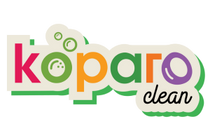
The Rundown: Why Bleach is Bad
BLEACH IN CLEANERS
When you bring out your home cleaning products, you will be surprised just how many of them contain bleach. Advertisements on primetime TV have created a false belief that one needs to clean with bleach for a germ-free household.

Bleach is commonly found in household cleaning supplies like toilet cleaners, stain removers and tile cleaners, to disinfect surfaces, lighten fabrics and remove stains. It even successfully kills certain unwanted microorganisms, algae, bacteria, mould, mildew and viruses.
Sounds like it’s a pretty heavy hitter in your cleaning arsenal, huh?
Then why is there so much talk nowadays about not using bleach?
What is Bleach?
Bleach is a disinfectant, but it's not a cleaner
Bleach is a mixture of compounds used industrially and domestically to remove stains, lighten fabric and disinfect surfaces. It comes in two forms:
1. Chlorine Bleach – extremely strong and used in household cleaners
2. Non-Chlorine or Oxygen Bleach – not as strong and used on fabrics
Due to its highly corrosive nature, bleach is diluted with water when used but even then it can be very, very harmful for your health and that of your children, family and pets. And since bleach fumes are extremely potent, people with allergies or asthma can get sick even with a small amount used.
Then there are ethical issues centred around its manufacture. Bleach is from the organochlorine family of chemicals which are compounds rarely found in nature and can take centuries to decompose.
What happens when you are exposed to bleach?
Direct Exposure
Direct contact with bleach through inhalation, ingestion or skin contact can harm your tissues, causing irritation and cell breakdown. This is especially true for more sensitive tissue in the eyes, respiratory tract, and skin. Symptoms could include red, watery or itchy eyes, blurred vision, skin and throat irritation, coughing and wheezing.
Indirect Exposure
Indirect exposure happens when bleach is intentionally or unintentionally mixed with chemicals like ammonia and acids, which ends up forming more toxic chemicals.
Getting the combination wrong
Concentration: If you get the dilution wrong and the bleach concentration is high, it can be toxic to your eyes and skin, causing burns and irritation.
Ammonia: If it comes in contact with other chemicals like ammonia, it becomes extremely hazardous. These are very common outcomes because ammonia is another chemical present in most glass cleaners, surface sprays and toilet cleaners. And this deadly cocktail can cause breathing problems, coughing, irritation in the eyes and nose, vomiting and even death.
Alcohol: Mixing bleach with ethanol, found in gasoline and alcoholic beverages, forms hydrochloric acid (HCL) and chloroform.
Chloroform irritates the eyes and skin and can cause severe damage to the nervous system and internal organs. It can cause temporary passing out as well as a fatal cardiac arrhythmia. Immediate medical attention must be sought on exposure to chloroform.
Hydrochloric acid HCL can damage the mucous membranes, cause severe chemical burns and even pulmonary edema.
Accidental poisoning: If you have children and pets in the house, you have to be extra careful that they do not come near the bleach. It’s best to avoid it entirely because children may accidentally come in contact with the bottle of bleach even when you put it in a place you never thought they could reach.
In a study published by the Journal of Pediatrics, over a 16-year period, more than 250,000 children under 5 were rushed to the ER for household cleaner exposure. The most common exposure was bleach, either through ingestion or spray bottle accidents.’ (Link to study https://pediatrics.aappublications.org/content/126/3/509)

Especially dangerous for pets: There is a common belief that animals are hardier than humans. Even if that’s true in some areas, chemical exposure actually harms them more severely. Pets tend to lick things off the table or the wet floor that you may have just cleaned with bleach! While it may not always be fatal, it can cause serious trouble. Just as with babies, their small size makes them vulnerable to the tiniest doses of exposure. Bleach is extremely toxic for pets and even a little bit can cause stomach lesions if ingested.
You don’t really need bleach for a clean house
The good news - you can clean with plant-based cleaners
The good news is that you do not need bleach for a germ-free home. Plant-based cleaners are equally effective and do not pose a threat to your family in any way. We, at Koparo care for your home just as we would for ours.
Our products are 100 % bleach-free with naturally derived ingredients. We don’t even add artificial dyes to our household cleaners. Since plant based products are known to be gentle on the most sensitive skin types and we encourage you to make the switch to cleaners that are toxin-free and safe.
Read more about the health issues caused by common household cleaning products:
Could Your Cleaners be Causing Headaches and Are Your Cleaning Products Exposing Your Child To The Risk Of Asthma?









